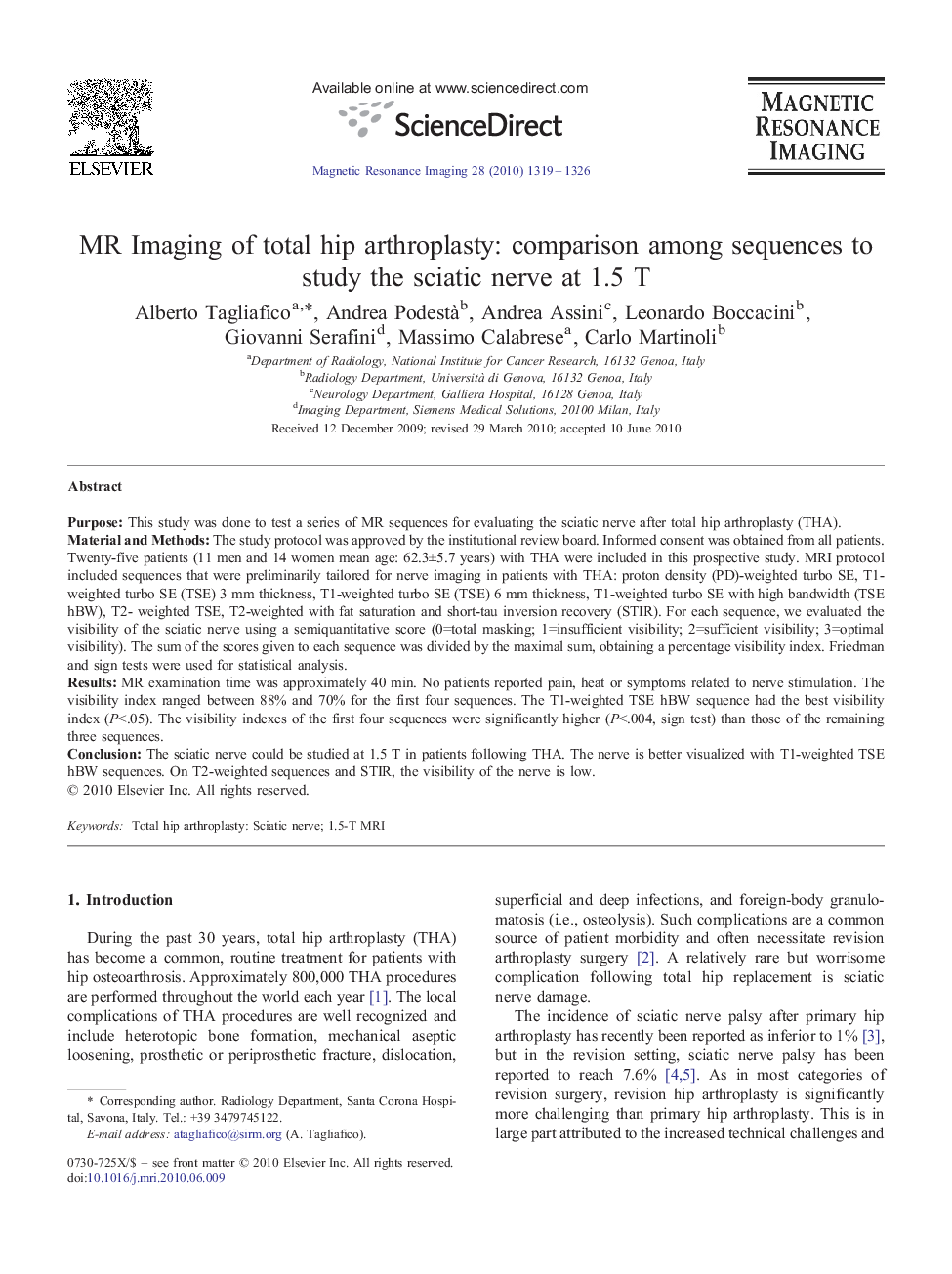| کد مقاله | کد نشریه | سال انتشار | مقاله انگلیسی | نسخه تمام متن |
|---|---|---|---|---|
| 1806999 | 1025238 | 2010 | 8 صفحه PDF | دانلود رایگان |

PurposeThis study was done to test a series of MR sequences for evaluating the sciatic nerve after total hip arthroplasty (THA).Material and MethodsThe study protocol was approved by the institutional review board. Informed consent was obtained from all patients. Twenty-five patients (11 men and 14 women mean age: 62.3±5.7 years) with THA were included in this prospective study. MRI protocol included sequences that were preliminarily tailored for nerve imaging in patients with THA: proton density (PD)-weighted turbo SE, T1-weighted turbo SE (TSE) 3 mm thickness, T1-weighted turbo SE (TSE) 6 mm thickness, T1-weighted turbo SE with high bandwidth (TSE hBW), T2- weighted TSE, T2-weighted with fat saturation and short-tau inversion recovery (STIR). For each sequence, we evaluated the visibility of the sciatic nerve using a semiquantitative score (0=total masking; 1=insufficient visibility; 2=sufficient visibility; 3=optimal visibility). The sum of the scores given to each sequence was divided by the maximal sum, obtaining a percentage visibility index. Friedman and sign tests were used for statistical analysis.ResultsMR examination time was approximately 40 min. No patients reported pain, heat or symptoms related to nerve stimulation. The visibility index ranged between 88% and 70% for the first four sequences. The T1-weighted TSE hBW sequence had the best visibility index (P<.05). The visibility indexes of the first four sequences were significantly higher (P<.004, sign test) than those of the remaining three sequences.ConclusionThe sciatic nerve could be studied at 1.5 T in patients following THA. The nerve is better visualized with T1-weighted TSE hBW sequences. On T2-weighted sequences and STIR, the visibility of the nerve is low.
Journal: Magnetic Resonance Imaging - Volume 28, Issue 9, November 2010, Pages 1319–1326